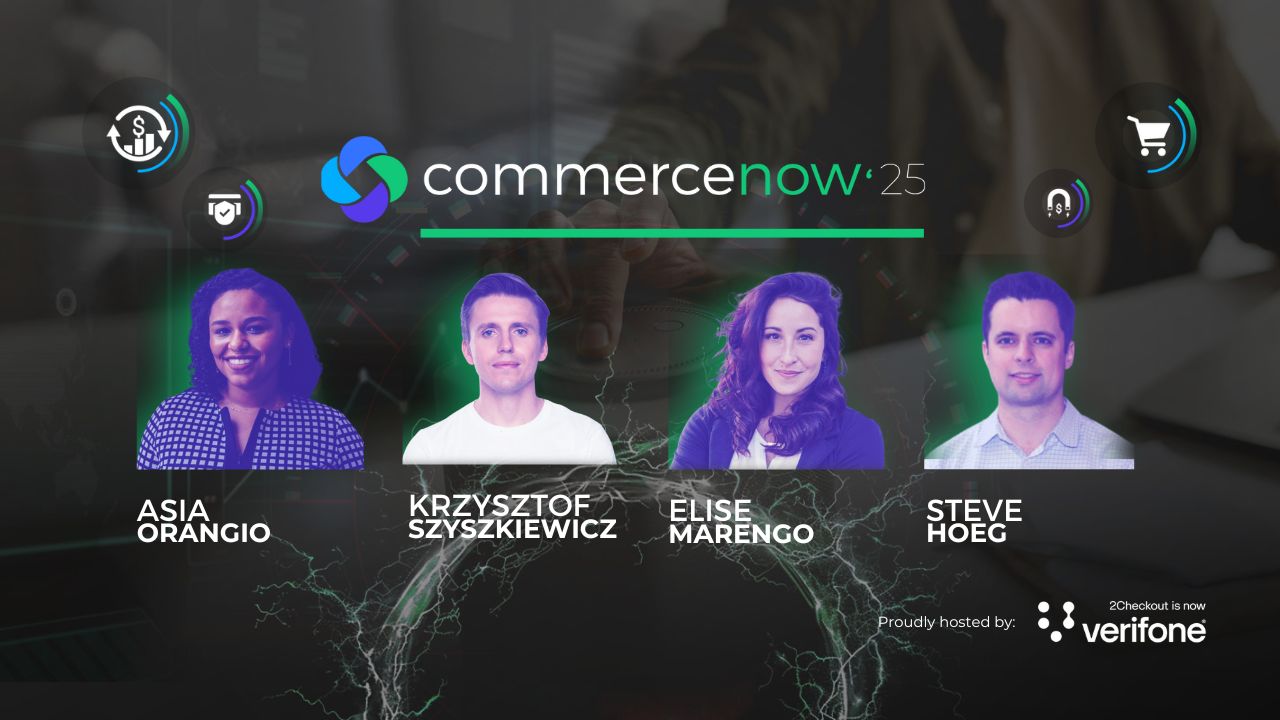Every subscription business wants to grow. But not all of them do. Why is that? Not for lack of trying, but perhaps for lack of proven strategies. At our CommerceNow event earlier this summer, we covered many important strategies for growing your business, including pricing and customer retention.
Check out the lessons we learned from two great presentations on pricing and retention, summarized below.
Making Sure the Price Is Right: Learning Pricing and Growth Lessons from Others
How many times have you fallen in love with a product or service, only to give up when looking at the price? Then you know how important pricing can be to customer acquisition! To make pricing easier for SaaS providers, Patrick Campbell of ProfitWell has gathered Pricing and Growth Lessons from 8,452 Subscription Companies, gained from interacting with thousands of companies to learn their approach to pricing.
The business world has changed, but we haven’t: the traditional marketing playbook focuses (too much) on customer acquisition, while most companies only ever spend about 15 hours all-time on their pricing strategy. This can be a significant barrier to acquiring the right customers. Doing more to get your pricing strategy right upfront and adjusting it over time based on data can really pay off in the long run in terms of more customers and especially more valuable customers for your business.
Most companies orient their pricing toward everything but customer sentiment, typically choosing either “cost-plus” or “competitor-based” pricing approaches. Cost-plus pricing is simply the cost of the product plus a set margin, while competitor-based pricing usually involves slightly undercutting (or adding a premium on top of, for premium products) what competitors are charging. These are simple approaches, but they can be ineffective alone. Also, neither one takes into account the most important aspect of pricing: what customers are willing to pay.
In an increasingly competitive world, slight differences in price can make or break your business, and the most important thing to do when pricing your products is incredibly simple: talk to your customers!
Sadly, even though we have more ways than ever before to connect with customers, most companies are having 10 or fewer conversations with customers each month, and almost half of companies are doing zero tests per month—not even subject line tests! That’s a lot of missed opportunities to learn what customers want.
Develop a Quantified Buyer Persona and Continue Learning
Instead of starting with a pricing strategy such as cost-based or competitor-based pricing, start instead with buyer personas that include cost and pricing. After all, you can’t know what to charge if you don’t know who’s buying. A detailed, quantified buyer persona that includes customer acquisition cost, willingness to pay for your product and customer lifetime value can help you pinpoint the product pricing strategy that best balances lifetime value and acquisition costs.
It turns out that most customers don’t think features are as valuable as product teams do, underscoring the importance of not pricing based on internal opinions.
Everything you do in your business should drive customers to conversion or justify offers to them. If you don’t know what customers want, you can’t justify prices.
Remember how most companies spend just 15 hours pricing their products, ever? It’s not enough to go through this exercise once: continue to validate it with data. Design an experiment to test your pricing assumptions, collect and analyze data, then decide whether this pricing approach really works for your business. Your experiment can be as simple as an email survey.
When analyzing the data you collect, take into account the MaxDiff to understand the most important factors in making decisions. Also, examine the data by company size and revenue: larger companies may be willing to pay more for an enterprise version, while small businesses may want to stick with free products until they reach a certain size. Start small and keep in mind that you can always test more—but it will be hard to win back customers who wrote you off because of pricing.
Now that you’ve gotten the price right and brought some customers on board, it’s time to retain them. Fortunately, we have some tips for that, too!
Keeping Customers on Board
Robert Skrob focuses on the Retention Point: The Single Largest Growth Factor in Subscription Businesses. Above all, businesses need to know when customers get hooked.
Think about Netflix streaming as an example. Does the first episode get you committed to a show, or does it take a few before you’re fully on board? You certainly wouldn’t jump into episode 6 of a season and expect things to make sense. Likewise, you wouldn’t expect to run the Boston Marathon the day after doing your first one-mile jog. You’d need several months to get into marathon shape.
Similarly, businesses need to develop an orderly onboarding process that’s designed to get customers hooked on their products. It won’t work to just throw everything at a prospect at once: provide customers only what they need to know now, giving just enough to keep them going. Too often, subscription companies overwhelm their subscribers with complex offers that are too good to be true. Nobody can transform their business overnight, even with the best product: it happens in stages, and it’s up to the product to take the user through the stages in a way that makes sense.
Instead of selling your prospects on tons of amazing features, sell a solution to a specific problem that you know your prospective customer has, then help that customer reach the solution using your product. It’s possible for a product to provide too much value: if an app can do everything under the sun, but makes it hard to do the one thing the customer needs, it’s not going to be very valuable. Remember that your relationship with a customer truly begins only after a sale is made: that’s the time to win customers over with value, not abandon them to chase another prospect.
Companies make plenty of mistakes when it comes to retention. A few common ones include using free gifts or upgrades to retain customers, which doesn’t work: if you’re not providing value, a free item without value won’t deliver it. Likewise, creating pain to prevent customers from churning is a poor strategy: making it hard to download files that customers need, for example, will probably only frustrate them. Lastly, don’t make the mistake of focusing on your product: focus on the customer and the feelings you create for them instead.
To help customers reach the retention point, you can create a welcome checklist and plan informed by these proven Retention Point Accelerators:
- Value is like water; too much is just as bad as too little.
- Every member contact is a sales communication.
- Begin by promoting the end.
- Your relationship begins after you make the sale.
- Lead, don’t teach.
- Member On Ramp gets new members up to speed.
- Solve problems to deliver member transformations.
- Your value is the feelings you deliver, not the stuff.
- It’s always about them.
- Relationship trumps message.
Using this welcome checklist and the retention principles, you can drive members toward the retention point that will get them hooked on your products and services, and coming back for more.
Do you have the right pricing and retention strategies in place? How are they working for you?





